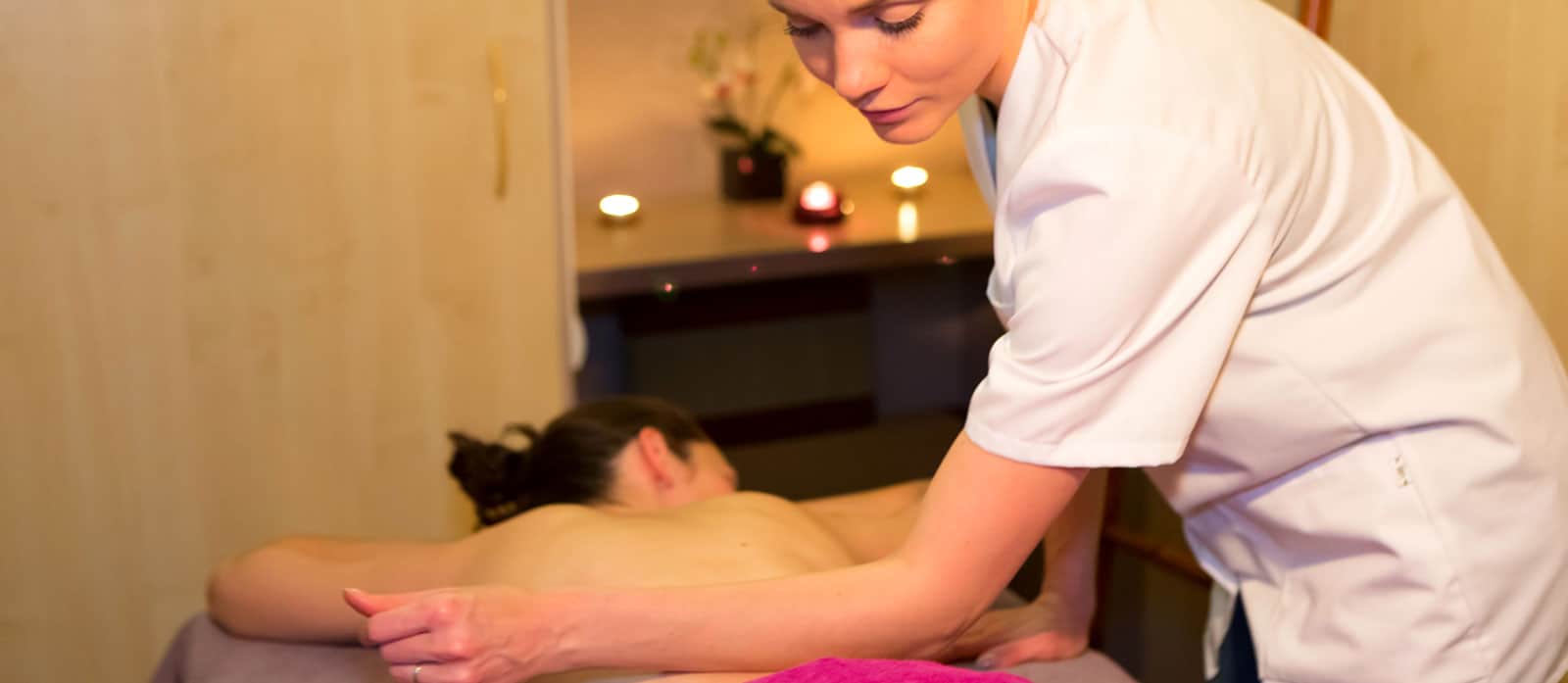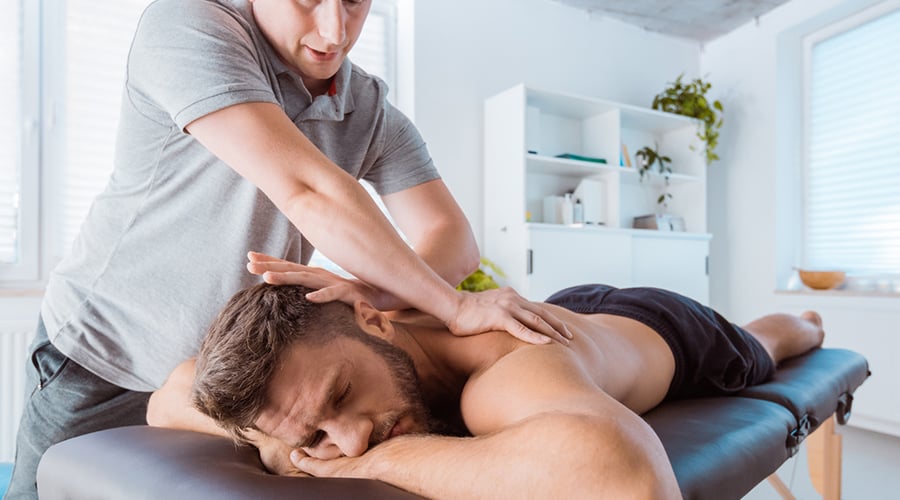Massage therapists looking to work with prenatal massage clients often worry about safety, effectiveness, and positive experience. This blog tackles these concerns, offering expert insights into safe practices and tips for delivering an effective prenatal massage. When done correctly, prenatal massage becomes a powerful tool for mothers-to-be, easing pregnancy related pains and discomforts, and improving overall well-being.
Recommended course: Working with Prenatal Massage Clients
How does the body change during pregnancy?
Massage therapists need to be conscious of the changes a woman’s body goes through at each stage of pregnancy. While there is no one size fits all, being aware of these changes can help therapists make necessary adjustments as needed and improve the comfort and experience of their prenatal massage client.
Changes during the first trimester
During the first trimester, massage therapists should be mindful of hormonal changes. Many women begin to feel sick or nauseous. They may feel faint or dizzy due to a drop in blood pressure. The pelvis begins to soften due to these hormonal changes, and the uterus doesn’t rise significantly. The breasts may become tender, potentially causing discomfort in a prone position.
Some clients might experience headaches and increased sensitivity to touch, pressure and even smell. Anxiety levels rise and women may experience excess fatigue, which is another reason why massage can be such a beneficial tool for expecting mothers.
During this period, therapists should avoid the use of strong strokes around the pelvis/abdomen. There is a higher risk of miscarriage early in the pregnancy, so it’s important to use extra care.
Changes during the second trimester
Pregnancy becomes more stable from week 16 to 18, allowing for the use of stronger massage techniques around the sacrum and pelvic area, like deep tissue massage. These techniques can also help alleviate back pain and muscle tension. The therapist may also introduce lymphatic drainage to reduce water retention and swelling of the hands and feet.
For most mothers, morning sickness typically stops around the second trimester. Her heart rate increases, and the uterus moves into the abdominal cavity. The abdomen grows substantially, making some positions more difficult during the massage. This highlights the importance of proper body positioning for the client’s safety and comfort.
Changes during the third trimester
In the third trimester, the focus shifts from pregnancy to birth and motherhood. The mother’s heart is displaced, her blood volume peaks, and issues related to the baby’s weight may arise. These may include increased pressure on the spine and abdominal muscles and discomfort in the ribs.
Massage therapists should avoid putting pressure on the pelvis and groin. Also, therapists should prioritize comfort, limiting the use of supine position, modifying techniques and maintaining open communication. This is also crucial to address potential issues like supine hypotension, preterm labor, and preeclampsia, that can occur at this stage.
Explore Passport CE Membership for Massage Therapy Professionals.
First trimester massage techniques for prenatal massage clients
During prenatal massage, the massage therapist can employ several safe and beneficial techniques tailored to the specific needs of a pregnant client. In the first trimester, therapists should avoid rigorous techniques and adjust the pressure according to the client’s comfort. Gentle Swedish Massage or effleurage techniques with long, smooth strokes, focused on the cervical and thoracic areas, can be effective.
During the massage, it’s essential to avoid direct pressure on specific points, like GB21 at the top of the trapezius. However, the use of petrissage techniques over this point are fine. Gentle stretching and range-of-motion techniques, such as gentle extensions for the neck and shoulders, can enhance flexibility. The massage therapist can incorporate scapula stretches and trapezius releases to alleviate tension.
Along the back and sacrum, attention to erector spinae with a stronger downward stroke can encourage correction of anterior tilt. Supportive cushions may also ease the pressure placed on the breast.
Second trimester massage techniques
This is when therapists can introduce deep tissue massage and trigger point therapy. These techniques can alleviate muscle tension and knots, minimize headaches, and ease common lower back and hip pain experienced during this stage.
Therapists should be cautious with abdominal work. Use strong strokes around the pelvis and pressure on the LI4 point with the web of thumb. Instead, prioritize techniques to these areas that stimulate blood flow and include mild stretching to promote flexibility and ease tension.
To address swelling in the hands and feet, lymphatic drainage techniques can boost circulation and alleviate fluid retention, promoting better overall health by delivering oxygen and nutrients to muscles and organs. Elevating the legs slightly during the massage can further reduce swelling.
If any health or safety concerns arise, therapists should recommend that clients consult their healthcare provider for guidance.
Third trimester massage techniques
At this point, mothers-to-be may start to feel both excited and nervous about the approaching labor. Therapists should incorporate visualization techniques to help them mentally prepare for the labor and alleviate this anxiety.
Heartburn and constipation may be issues for the client, so they should select massage positions that alleviate pressure on the abdomen. Supportive cushions can help maintain proper body alignment and enhance the client’s comfort during the massage.
Using gentle strokes on the upper back and shoulders can help ease tension and provide relief. Breast massage can aid in supporting tissue changes and prepare the body for breastfeeding.
To prevent supine hypotension, therapists should avoid extended periods of supine positioning. Instead, they can opt for semi-reclining or side-lying positions, which are safer for pregnant individuals. Overall, therapists should be mindful of these considerations to provide effective and safe massage therapy during the third trimester of pregnancy.
How to position a pregnant client during massage therapy
To enhance the client’s experience, safety, and comfort, massage therapists should prioritize careful positioning during prenatal therapy. For example:
- Prone positions are beneficial in the first trimester but should be approached with caution later.
- Supine positions may be used in the first trimester but limited in the second and third.
- Semi-reclining, side-lying, and forward-leaning positions can be used throughout the pregnancy.
In the early trimesters, typically until the fourth or fifth months, positions like lying on the back or stomach are fine. As the belly grows, the prone position may become uncomfortable.
However, lying on the back (supine position) for too long can be risky. It can put pressure on the blood vessels (aorta, inferior vena cava) slowing down blood flow, including to the uterus. Instead, therapists should opt for side lying, semi-prone, or sitting positions with supportive pillows. These pillows are essential for comfort and accessibility during the massage.
Modern pregnancy pillows, such as U-shaped ones, support the abdomen while allowing comfortable side lying positioning. These adjustments are necessary as the pregnancy progresses! Plus, each of them offers unique benefits.
For example, the semi-reclining position minimizes pressure on the inferior vena cava, while side lying allows for effective spinal and pelvic assessment, relief from pelvic pressure, and optimal fetal positioning. Understanding the advantages and considerations of each position ensures a safe and comforting prenatal massage experience.
Expert tips for working with prenatal massage clients
Below are a few simple, important tips for therapists to become the best experts when working with prenatal clients.
Massage therapists should actively participate in courses and continuously seek opportunities to learn about massage techniques. As scientific knowledge evolves and new effective methods emerge, staying updated will enhance their skills and knowledge in the field.
Moreover, therapists can benefit from seeking guidance from more experienced colleagues by observing and taking notes during their sessions. Most professionals are willing to support those eager to learn and help them grow in their practice.
Explore Passport CE Membership for Massage Therapy Professionals.
Seek approval from a medical specialist
While massage is generally safe when performed correctly, it’s important to recognize that there’s no universal approach for prenatal clients. If a client has a history of miscarriage or other medical conditions, it’s essential to seek approval from a doctor before proceeding with massage therapy.
This precaution ensures the safety of both the client and the therapist. Therapists should have a health waiver form prepared to gather information about the client’s medical history and specific requirements.
Avoid certain pressure points
To prioritize safety, therapists should exercise caution when working with these pressure points:
- LI4: Webbing of the thumb and index fingers
- GB21: Highest point of the trapezius in line with the nipples
- K1: Midway on the soles of both feet
- S6: Above the medial ankles under the tibia
- S10: Above the patella at the middle of the belly of the VM
- L3: Between first and second toes
- BL67: Side of the tips of the small toes
- BL61: Midway between lateral ankle bones
- K5: Midway between medial ankle bones and heels
Ensure comfort and modesty for prenatal massage clients
Therapists should cover the parts of the client’s body that are not being massaged (draping), respecting the client’s privacy and ensuring warmth, comfort and modesty. Regular check-ins and client consent regarding specific areas are crucial considerations, too.
Avoid perfumes or oils with intense smells
At the early stage of the pregnancy, prenatal women may develop sensitivities to smell. If that’s the case, massage therapists should avoid the use of perfumes while working and oils or creams with intense smells. Otherwise, aromatherapy oils in most cases can alleviate nausea and promote relaxation.
Explore Passport CE Membership for Massage Therapy Professionals.






